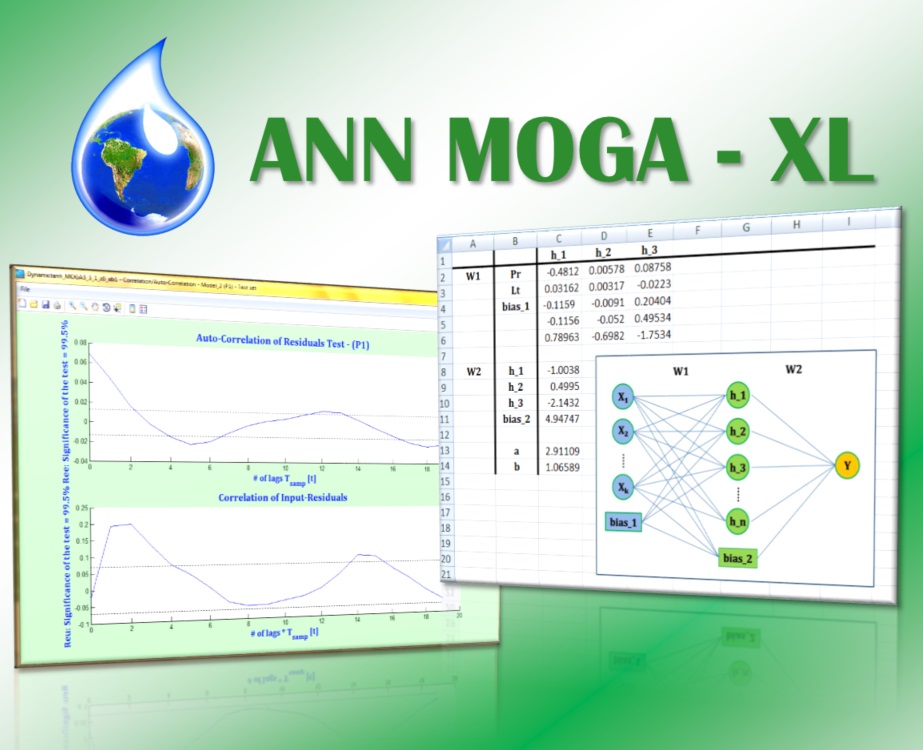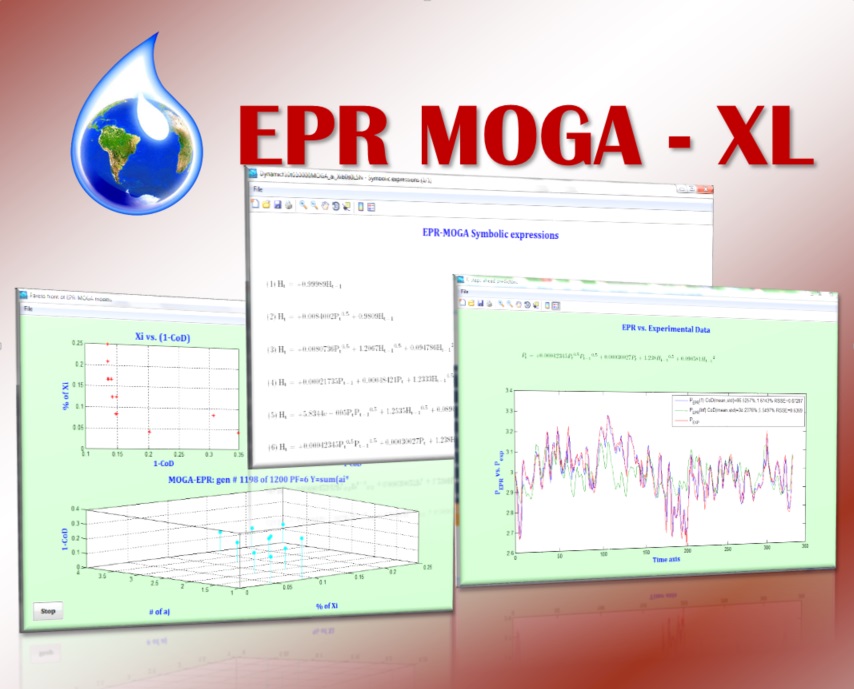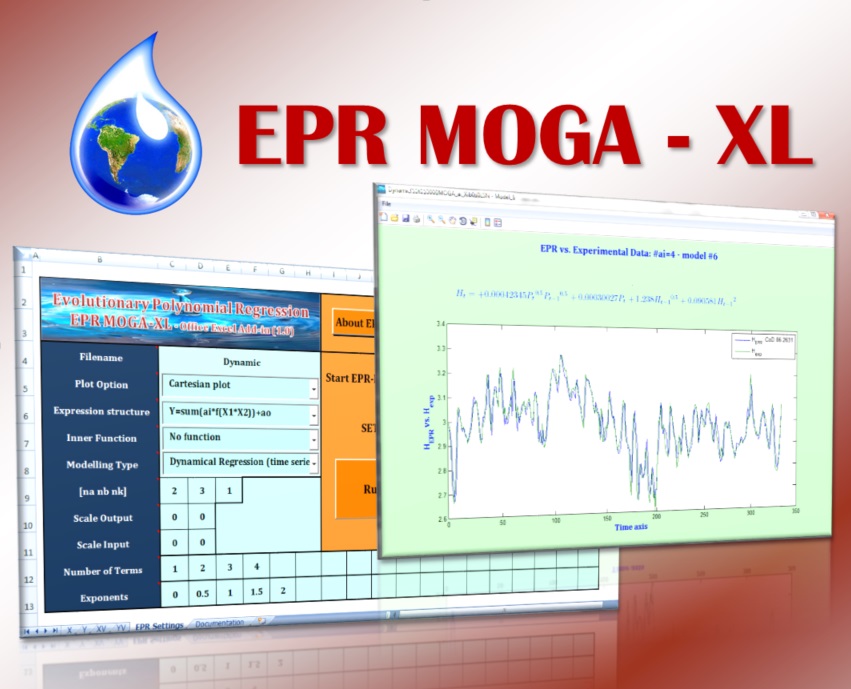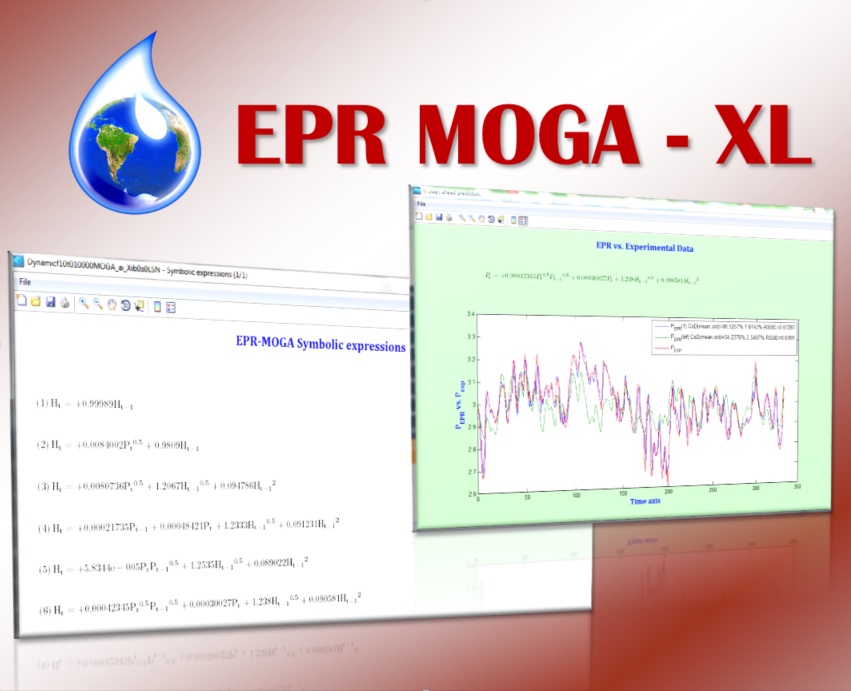The data-driven approaches have been experiencing a progressively increasing use for modelling natural and artificial systems. Artificial Neural Networks (ANNs) represent a typical data-driven technique, which is well established and widely used to model non-linear phenomena. ANNs do not return explicit equations, but produce fairly complex structures that model one or more outputs given an input data set. This approach has several advantages which have been extensively proven in literature, such as describing highly non-linear phenomena with a high level of accuracy, due to their ability to learn from data. However, their success was often bounded to pilot/research application, whereas modellers and users are researchers.



ANN MOGA (ANNs by Multi-Objective Genetic Algorithm) is a tool developed on the homonymous modelling methodology based on the ANNs paradigm [Giustolisi and Simeone (2006)]. The tool employs a particular structure of ANN named the Input-Output Neural Network (IONN). In particular, it is based on a MOGA approach for construction of IONN models, which prevents potential overfitting troubles caused by poor generalization capabilities of the identified ANNs [Giustolisi and Laucelli (2005)]. This can be obtained by minimizing the model’s input dimension and the number of hidden neurons (flexibility) while preserving fitness properties. Additionally, the so-called curse of dimensionality, which often affects this modelling technique, highlights the importance of properly selecting the dimension of model’s inputs and its components in order to avoid sparseness of the training events, especially in the case of a limited amount of data, and to weigh carefully the quality of data when deciding on the number of hidden neurons. Both problems strengthen the need for the most parsimonious and effective structure for the IONN, which influence its accuracy. This is here achieved in a multi-objective fashion by simultaneously minimizing three different cost functions: the fitness of returned models, the number of hidden neurons and the number of model input variables.
The approach used for multi-objective optimization is the Pareto dominance criterion, while to solve the combinatorial optimization problem of discerning the Pareto solutions set, an evolutionary approach based on a MOGA) strategy has been adopted here.
ANN MOGA-XL vr.1 integrates some advancements in artificial intelligence and data-driven modelling areas like an efficient multi-objective genetic algorithm (OPTIMOGA) and the algorithm for developing input-output Artificial Neural Networks. ANN MOGA-XL is an MS-Excel add-in and the user can launch runs for ANN construction as a function in MS-Excel. Input data can be manually selected from any spreadsheets, without the hindrances of previous versions which required a strict data preparation. A sheet containing all ANN modelling options can be easily modified and retrieved for next analyses. Moreover, the user is guided through proper option setting by some tips, which recall the meaning of each parameter. In order to facilitate multiple analyses, all the parameters (weights, inputs, hidden neurons, biases) of ANN model(s) obtained, the values model predictions and fitness indicators of each model are stored in a separate Excel file. This allows the user to perform multiple analyses while preserving complete information on both input data and modelling settings.
To get installation packages contact as Idea-rt contact

.png)




